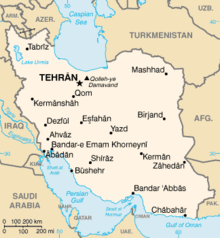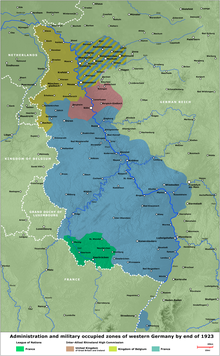History of the Great War
Populist history can dilute the story to the point of worthlessness and civilian academics can be prone to select facts and interpretations according to their ideals, ideology and preconceived ideas.
The authors have been accused of exculpating Field Marshal Sir Douglas Haig, commander of the British Expeditionary Force (BEF) from December 1915 to the end of the war, by default.
Lord Esher, a member of the Committee of Imperial Defence, suggested that a subcommittee be established as the Historical Section, to centralise the collection of army and navy archives, as a repository of the lessons of war for strategists.
A later version, (History of the war in South Africa 1899–1902, four volumes, 1906–1910) by Major-General Frederick Maurice reached publication but had needed a large number of assistants which increased the price of the book; it was favourably received but did not sell well.
Although the diaries would not show why events occurred, Atkinson recommended that they should be indexed and grouped by unit, subject and chronology for later scrutiny to identify discrepancies caused by the organisation of the material.
[8] Work on the military histories in 1919 was hampered by paucity of resources and bad management, until Brigadier-General James Edmonds (25 December 1861 – 2 August 1956), who had joined the Historical Section in February 1919, was appointed Director on 1 April.
Edmonds blamed Fortescue for lack of interest, lethargy and ignoring the records made available, bungling the chance to write an exciting story of the BEF by delivering a patchwork of unit diaries.
Daniel and Edmonds usually attended; other official historians and members of the Colonial and India offices were present for particular discussions; where the committee failed to agree, a ruling was made by the Cabinet.
The Treasury managed to obtain the removal of Lieutenant-General Launcelot Kiggell, former Chief of the General Staff of the British Armies in France (late 1915 to early 1918) from 1918 Part I for reasons of cost.
At the same meeting, the Foreign Office asked for a volume on the Blockade of Germany at their expense, because of the lessons that could be learned and its utility in conferences on international law; by being labelled Confidential it could be written frankly.
Griffith called the quantity of writing on the Great War "prodigious" and that despite Edmonds being unstable, insecure and having never held a field appointment, he was conscientious, intelligent and rarely allowed his devious and opinionated nature to distort his work on the official history.
In writing the first Gallipoli volume (1929), Cecil Aspinall-Oglander ignored the convention and on the draft copy, Edmonds called his account biased and lacking in the objective judgement necessary for an official historian.
Stephen Gaslee of the Foreign Office wrote to Daniel in October 1927, about his concern that the government of the Soviet Union (USSR) might publish information from the Russian Empire on Iran.
Sir Percy Cox (20 November 1864 – 20 February 1937) who had been Chief Political Officer of Indian Expeditionary Force D, told Moberly that it was a fine piece of work, free from bias.
When Daniel retired in late 1939, Edmonds took on the duties of Secretary as well as Director and on 15 November, the Historical Section was evacuated to St. Anne's on Sea, Lancashire and thence to the National Library of Wales at Aberystwyth in April 1942.
Requests for help from the Director of the Imperial War Museum had little effect, since his books had been moved to Barnstaple in Devon and because coverage of the occupation and inter-war period was sparse, owing to the usual lack of money.
Unemployment pay should never be referred to as a "dole" as this implied that British men had enlisted in the pre-1914 army to avoid starvation and Lloyd George (17 January 1863 – 26 March 1945) might resent being portrayed as "less well-disposed" to Germany, than Bonar Law (16 September 1858 – 30 October 1923).
[28] Brigadier-General John Davidson, head of the Operations Branch at General Headquarters, questioned the Fifth Army plan in a memorandum of 26 June, recommending that the objectives be less ambitious and that the provision for an advance of 5,000 yd (2.8 mi; 4.6 km) to the red line be abandoned.
[38] An advance of 5,000 yd (4,600 m) to the red line was not fundamental to the plan and discretion to attempt it was left with the divisional commanders, based on the extent of local German resistance, a provision which conformed to the manual SS 135.
Travers wrote that Edmonds was willing to accept criticism and made amendments for interested parties, to whom drafts were circulated but became increasingly protective of Haig's reputation and noticeably autocratic towards the other historians.
Gough had attempted a breakthrough offensive, conforming to the decisions laid down by Haig, was at fault for overlooking the importance of the Gheluvelt plateau and for ignoring a suggestion by the XIV Corps commander (Lieutenant-General Rudolph Cavan), to add weight to the attack there.
[46] Travers wrote that 1917 Part II omitted a request made by Gough in August for a conference, to discuss a remedy for the lack of weight being brought against the Gheluvelt plateau, a matter that Haig and the staff at GHQ should have settled long before the attack commenced, along with the awkward placement of the Second Army-Fifth Army boundary.
In the published version of 1917 Part II, most of the blame for the decisions on the type of offensive, the width and direction of attacks and responsibility for planning was put on Gough and the Fifth Army staff, rather than on Haig and GHQ for selecting the Ypres Salient at all.
[50] Green also wrote that Edmonds referred to the continuity of Haig's optimism about the possibility of a deep advance on 4 August, 21 September and in early October, long after the likelihood had ended.
[51] Edmonds changed the draft in Gough's favour, by showing that the weather in August was unusually wet, with extracts from a French study Le Climat de La France (Guillaume Bigourdan) that contradicted the 1929 book by Haig's Chief Intelligence Officer Brigadier-General John Charteris (1915–1918).
[52][53] Edmonds wrote that the worst of the weather occurred from 12 October to 10 November, yet vividly described the wet and muddy conditions in August and their morale-sapping effect on British troops.
Wynne's conclusion had been that the strategy of retaining the initiative to protect the French Army had worked and that the tactical intention to clear the Belgian coast had failed, due to an underestimation of German resilience and the mistaken attempt at a breakthrough.
Travers had criticised the published draft for failing to record that Haig had not resolved disagreements and problems among his subordinates, long before the offensive began; Green wrote that Edmonds had made the same criticism.
Prior and Wilson wrote that these methods were not used on 31 July, because Haig had over-ruled Rawlinson, Plumer and Davidson; Gough over-reached and left the British infantry vulnerable to German counter-attacks.
Edmonds had referred to the external constraints of lack of manpower and the state of the French Army, yet his narrative had made the military errors manifest; Haig's desire for a breakthrough had led to a failure to relate strategy to tactics.



